London Pass Part 1: Visiting Westminster and The Shard
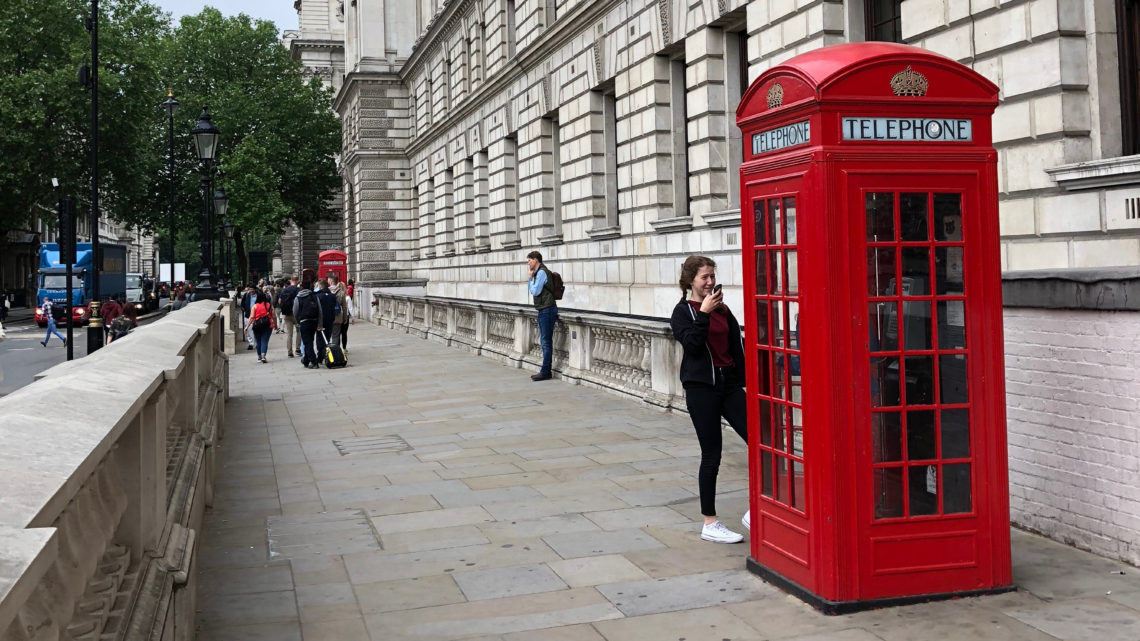
London is a big city, with many attractions, historic sites, and diverse neighborhoods. I only had four days to explore this sprawling capital and wanted to make the most of this time. In addition, I went in knowing I’d be paying hefty entrance fees at many of the top attractions on my list.
In order to get the best deal and see as much of the city as possible, I opted for a London Pass. This sightseeing pass includes most of London’s major attractions for one flat rate. Some places even include skip-the-line benefits. I opted for the 2-day pass since I wanted to hit off several attractions without feeling too rushed. I paid £94, which cost significantly less than what I would have paid for each individual entrance ticket.
On day one of my 2-day
After a quick breakfast, I hopped on the Circle Line towards Westminster Station. Out of all the lines on the Tube, the Circle Line is one of the most convenient for reaching London’s many tourist destinations.
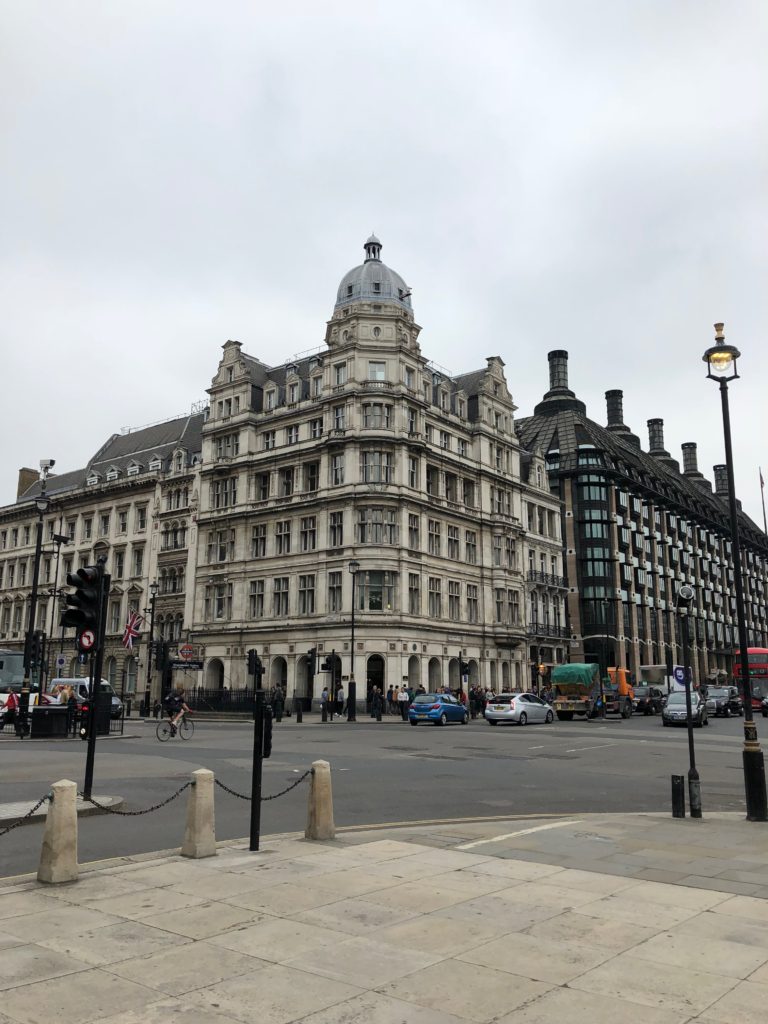
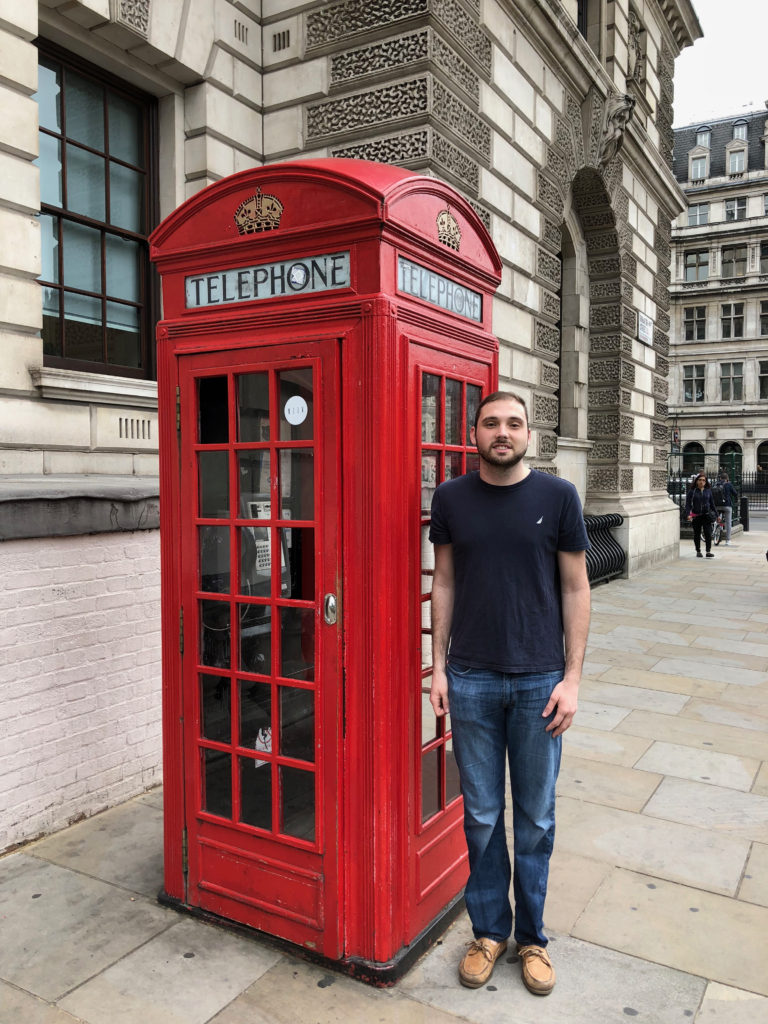
I stepped out onto the streets of what felt like the classic London neighborhood I had imagined. Many of Westminster’s buildings are built in the Edwardian Baroque style, mostly out of white masonry. Rustication decorates certain elements: a typical characteristic of this style. And of course, the area is dotted with Britain’s charming red phone boxes.
Westminster Abbey
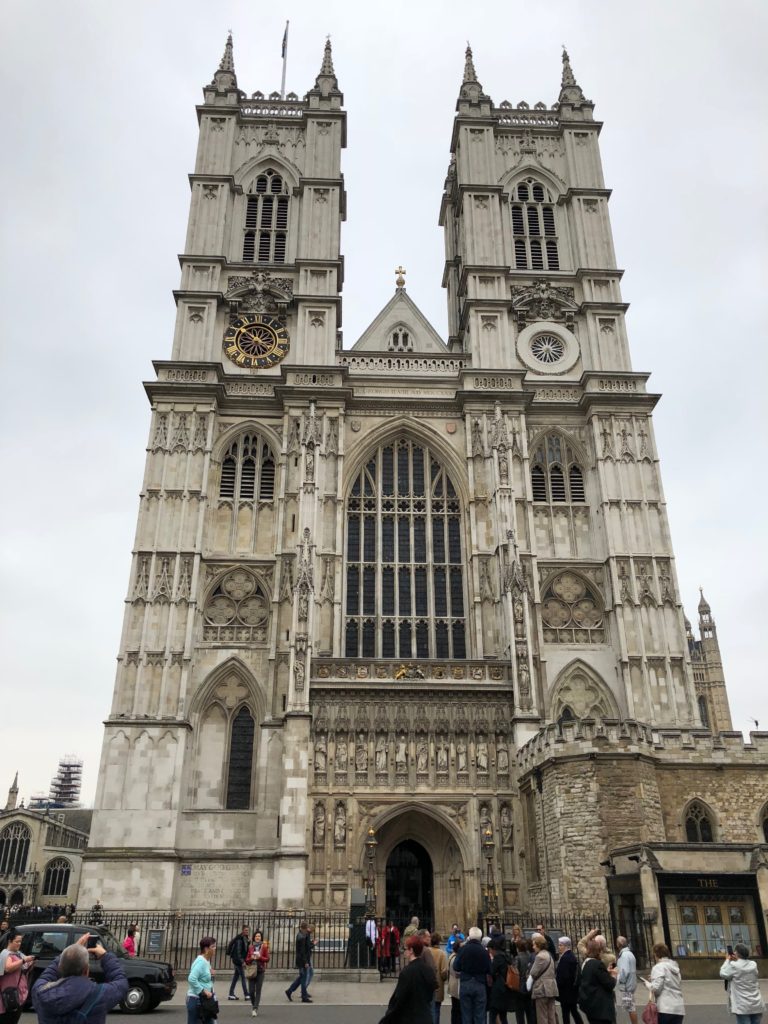
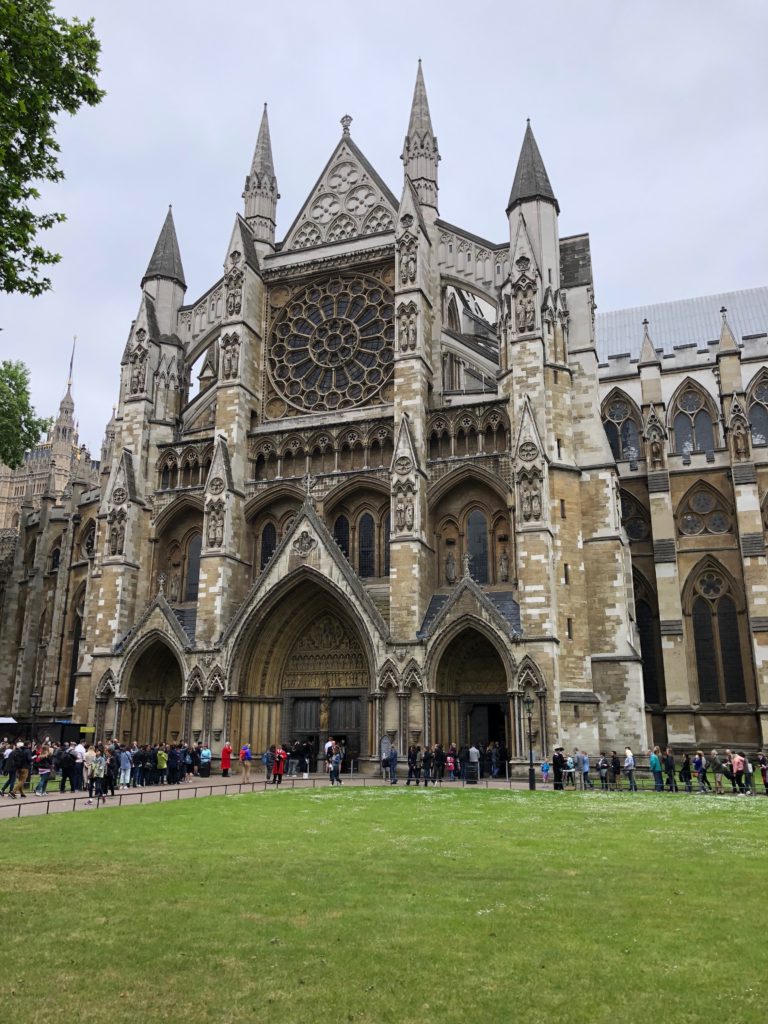
The neighborhood also includes some prominent Gothic buildings, including my first major attraction of the day: Westminster Abbey! Much like Notre Dame in Paris, the exterior is dazzled with decorations on almost every corner, from the statues of martyrs over its western entrance to the gilded clock face on its northern tower. The church also includes the typical characteristics of Gothic architecture, such as flying buttresses and stained glass windows.
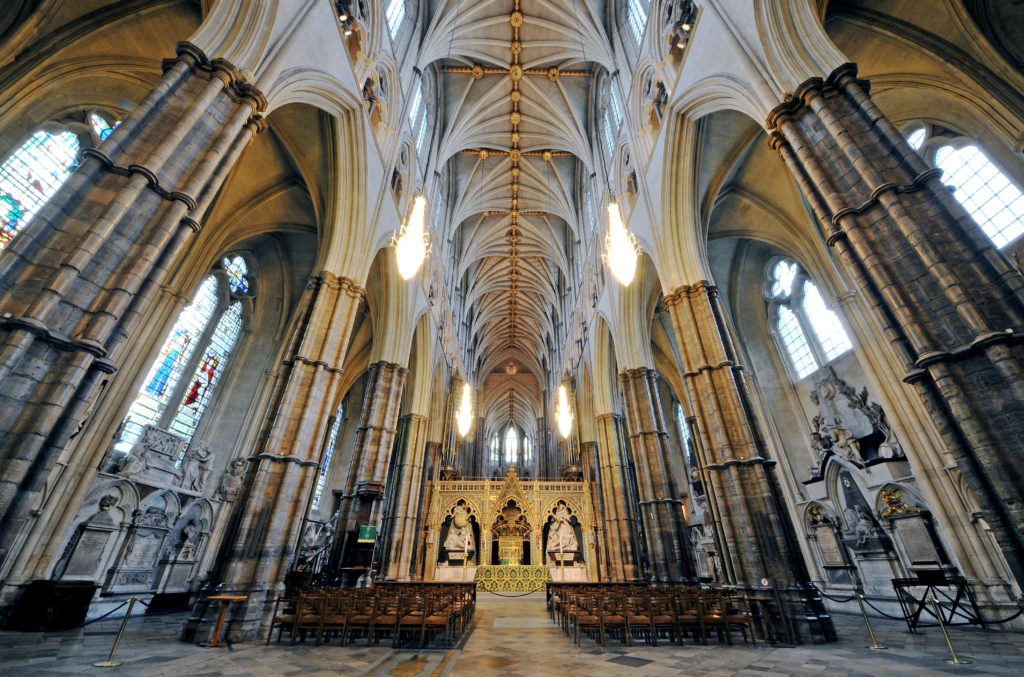
After a short 30-minute wait outside, I entered the grand abbey and fell in love with its interior. It is simply an architectural treat! The central nave contains a high, rib vaulted ceiling that dwarfs the abbey’s many visitors. The ribs are intricately laced together, giving the nave a strong sense of importance. Massive, ornamented columns hold up the pointed arches that separate the central nave from the outer aisles.
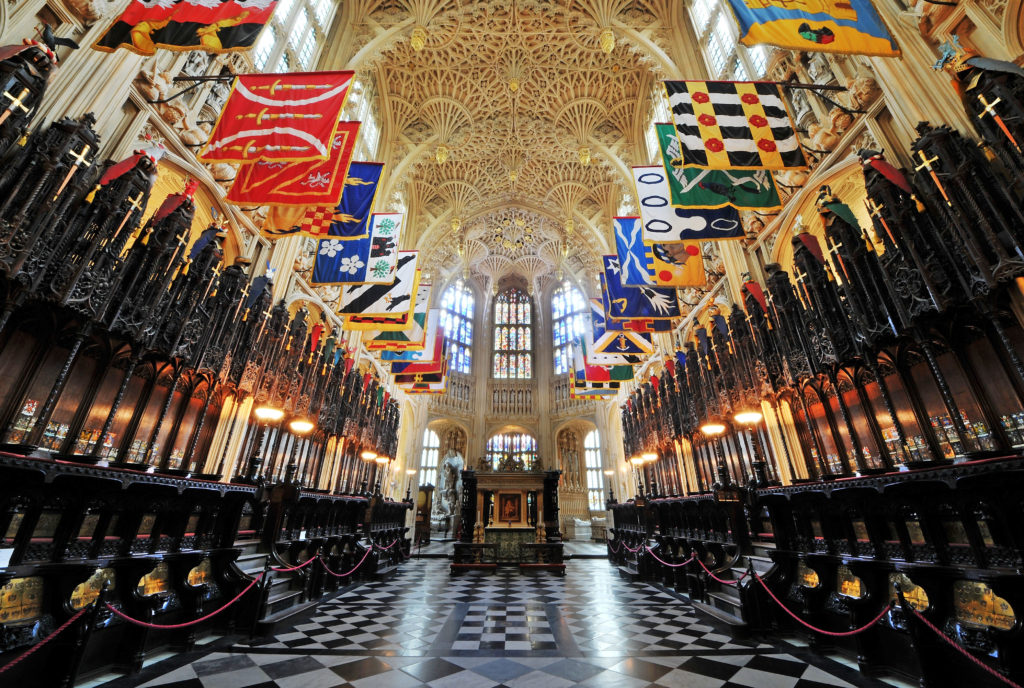
Towards the rear of the building is the smaller lady chapel. The ceiling in this section is a prominent example of fan vaulting: unique to many English Gothic buildings. This one, in particular, is richly carved and decorated with gilded pendants. The chapel is lined with wooden seats for monks and contains a small altar at the center.
Big Ben
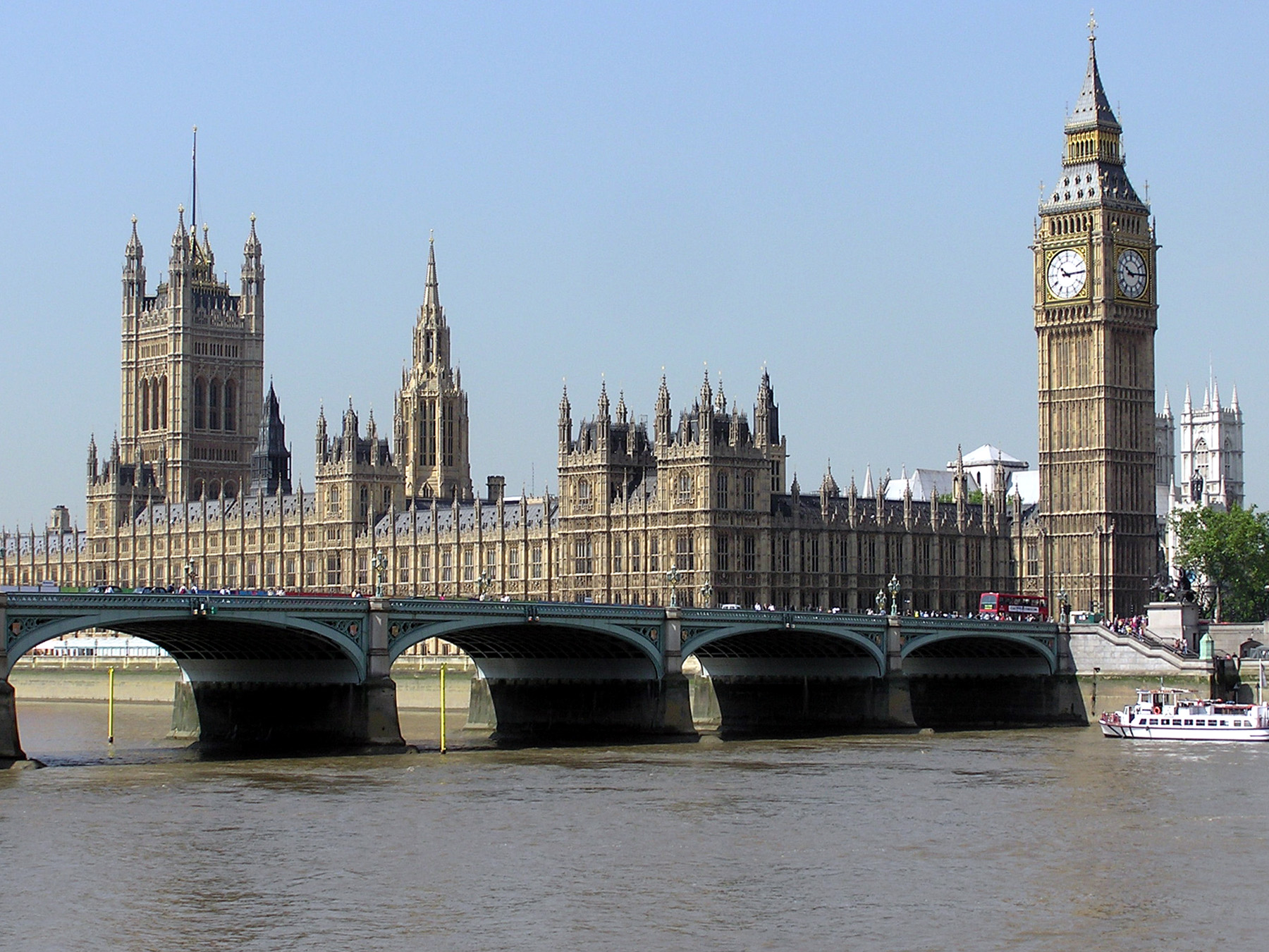
Westminster is also the neighborhood where London’s iconic Big Ben and Houses of Parliament are located. Originally, this was going to be the first site I would visit since I always pictured it when I thought of London.
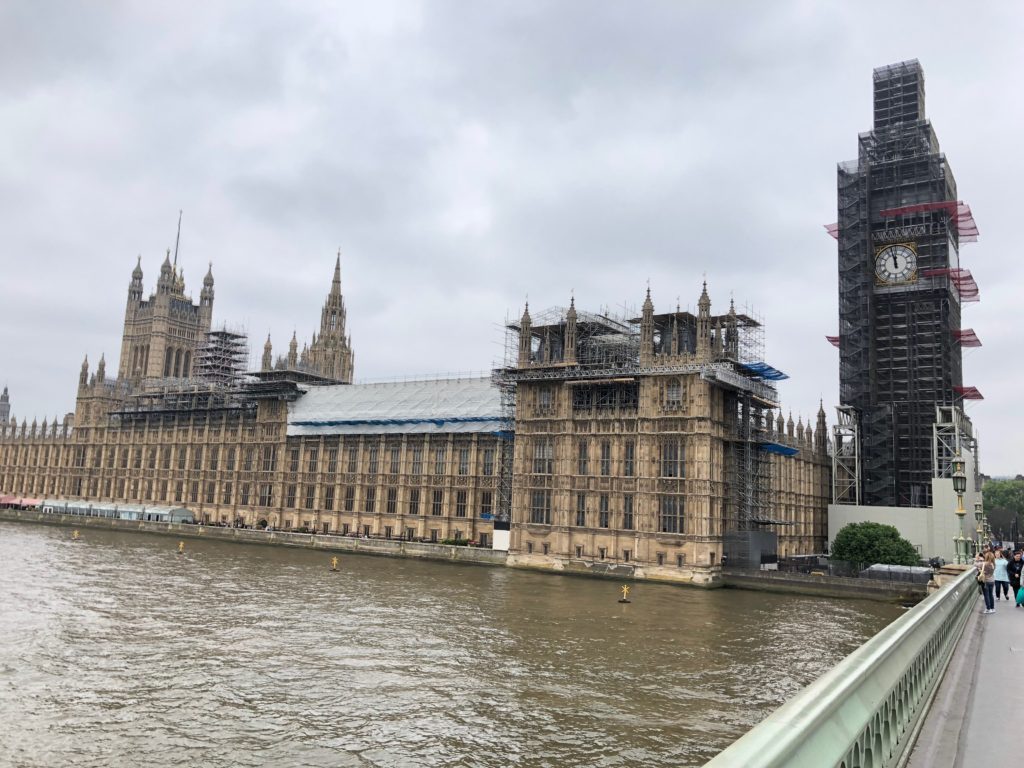
Unfortunately, the complex is under renovation and Big Ben is covered in scaffolding to the point where it is unrecognizable. The bells are currently silent until work is completed in 2021. The only part of the iconic tower that was visible during my visit was a single clock face peering out of the surrounding scaffolding. The clock keeper has promised that at least one of the four faces will be visible at a time. I was forced to used my imagination to think of the Big Ben I saw in pictures. I cannot wait to return to London in 2021 to see the clock tower fully restored to its former glory!
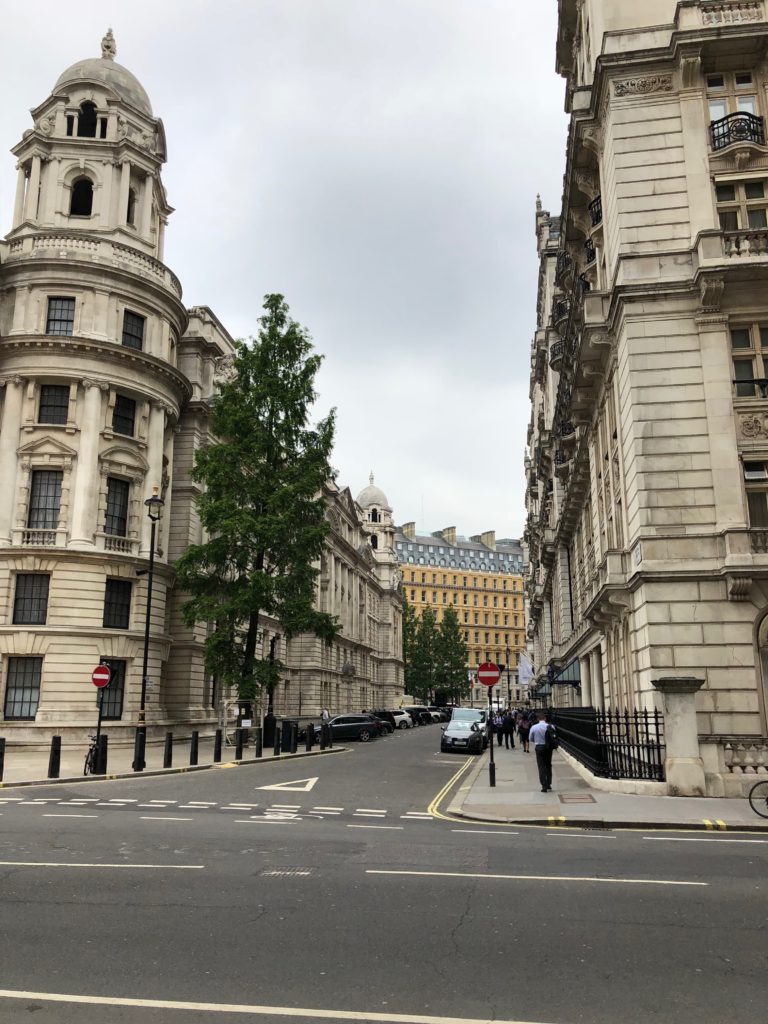
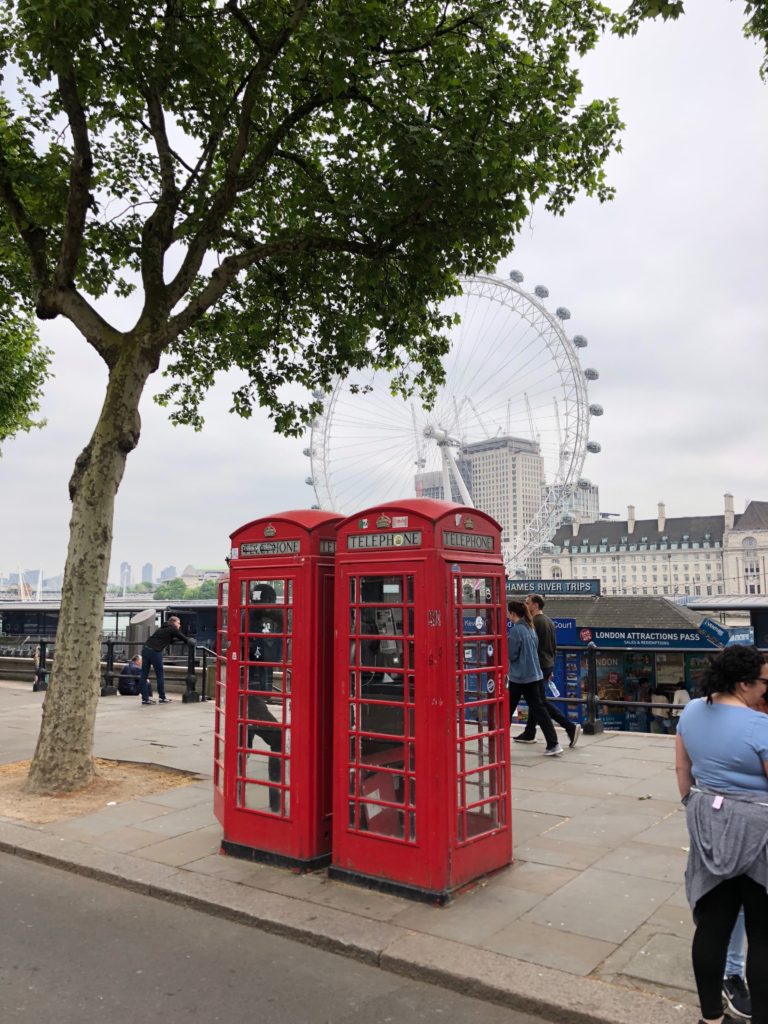
I continued my walk around the neighborhood, admiring more of its Baroque architecture and British charm. I even got a glimpse of the London Eye: Europe’s tallest observation wheel!
Trafalgar Square
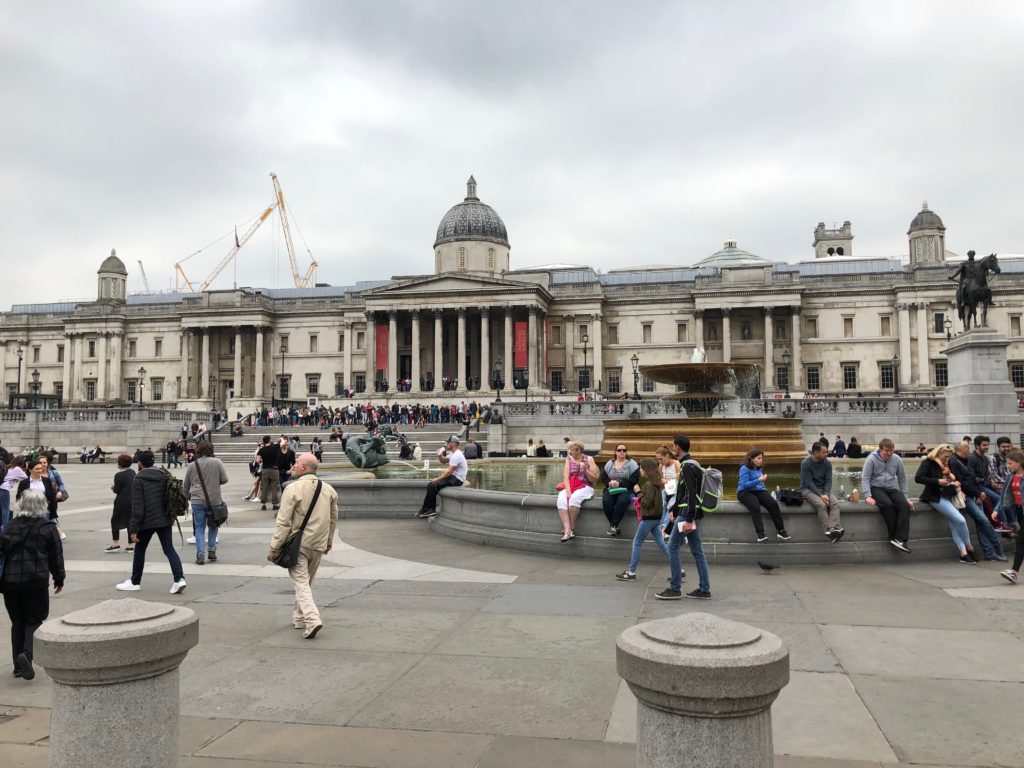
I eventually reached Trafalgar Square: another one of London’s prominent meeting points. The square is home to London’s National Gallery, a large art museum that houses over 2000 paintings. While I did not have time to explore, I will be sure to drop by next time I am in the city.
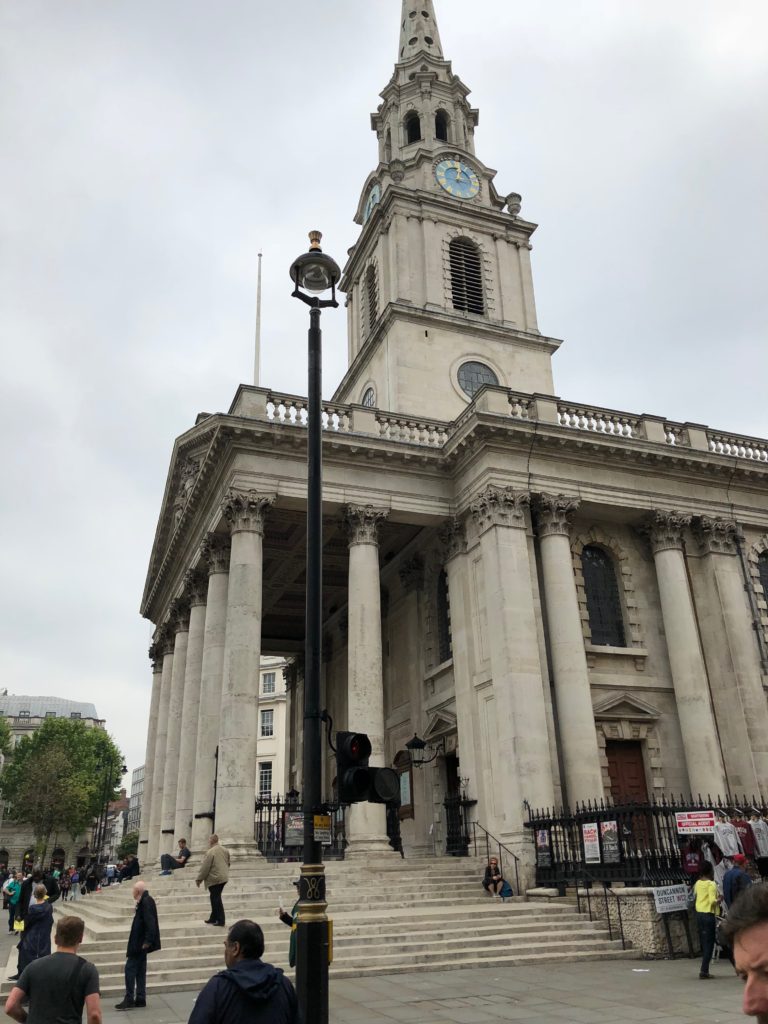
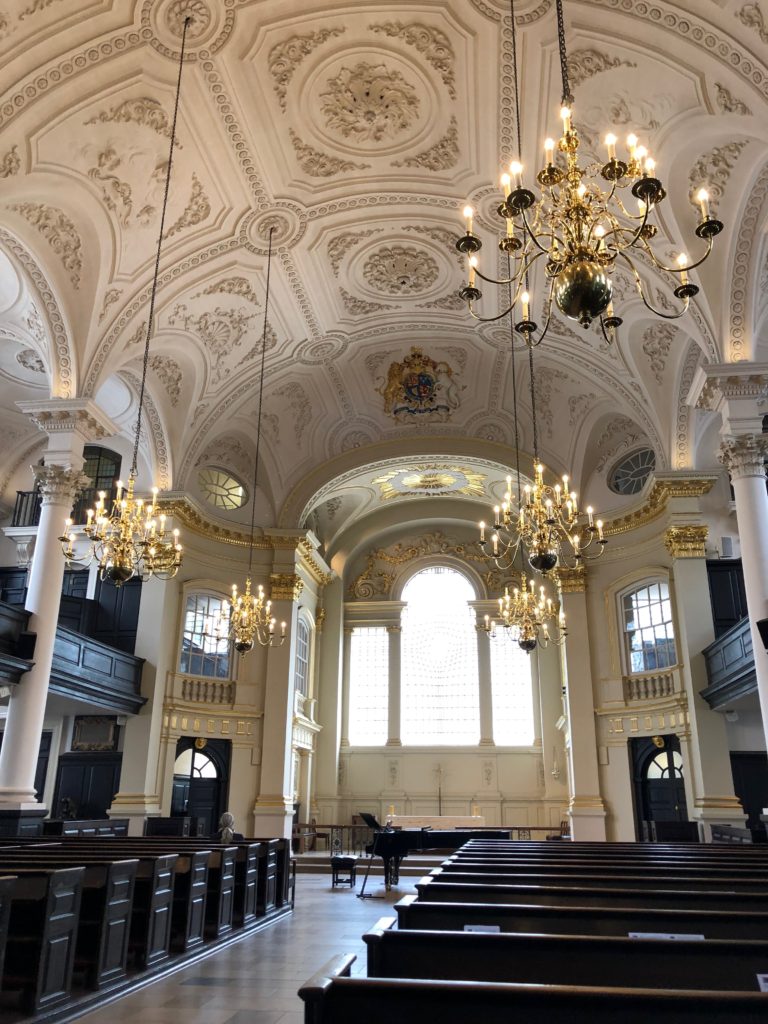
At the northeast corner of the square lies a small church designed by Scottish architect James Gibbs: St. Martin-in-the-Fields. I had previously studied this church in an architectural history class as an example of Neoclassical architecture. The church’s front façade takes its inspiration from a traditional Palladian temple and combines it with a medieval-style steeple. Inside, a white plastered interior is lightly ornamented and decorated with chandeliers, providing a cozy worship space to escape the bustling city outside.
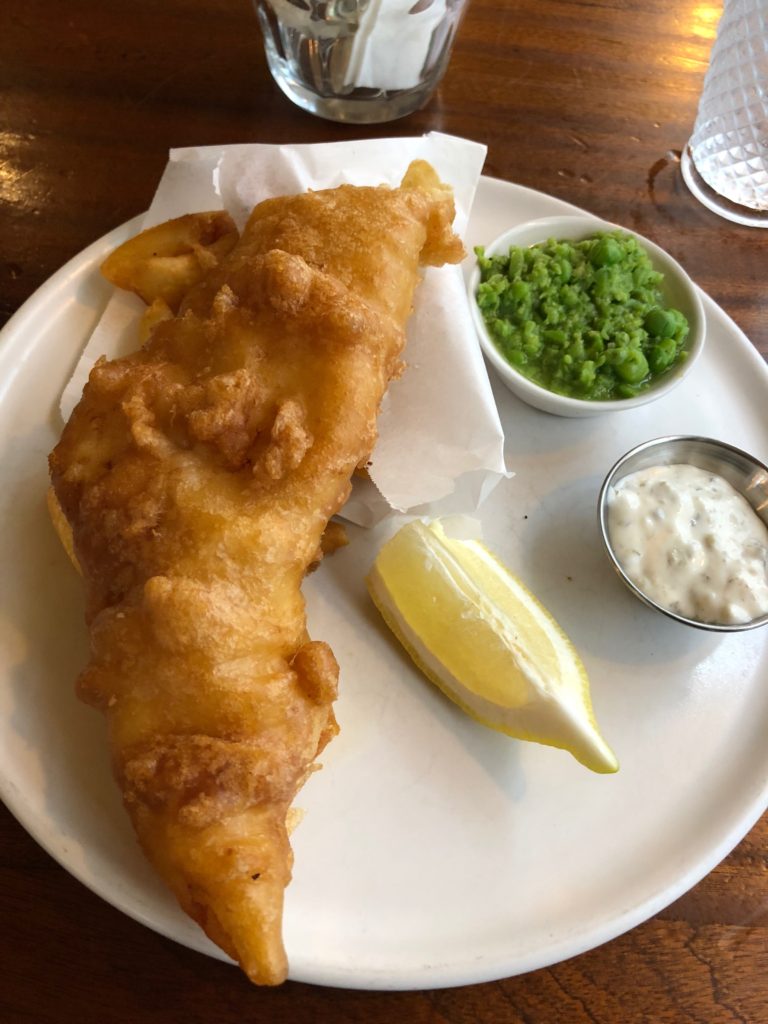
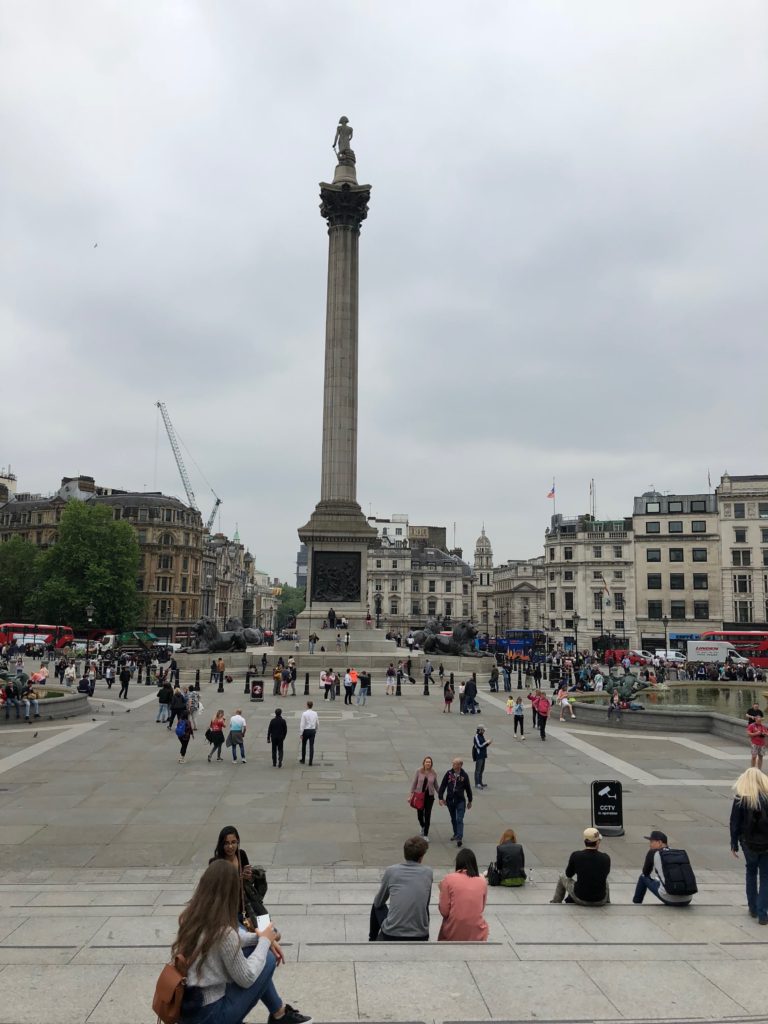
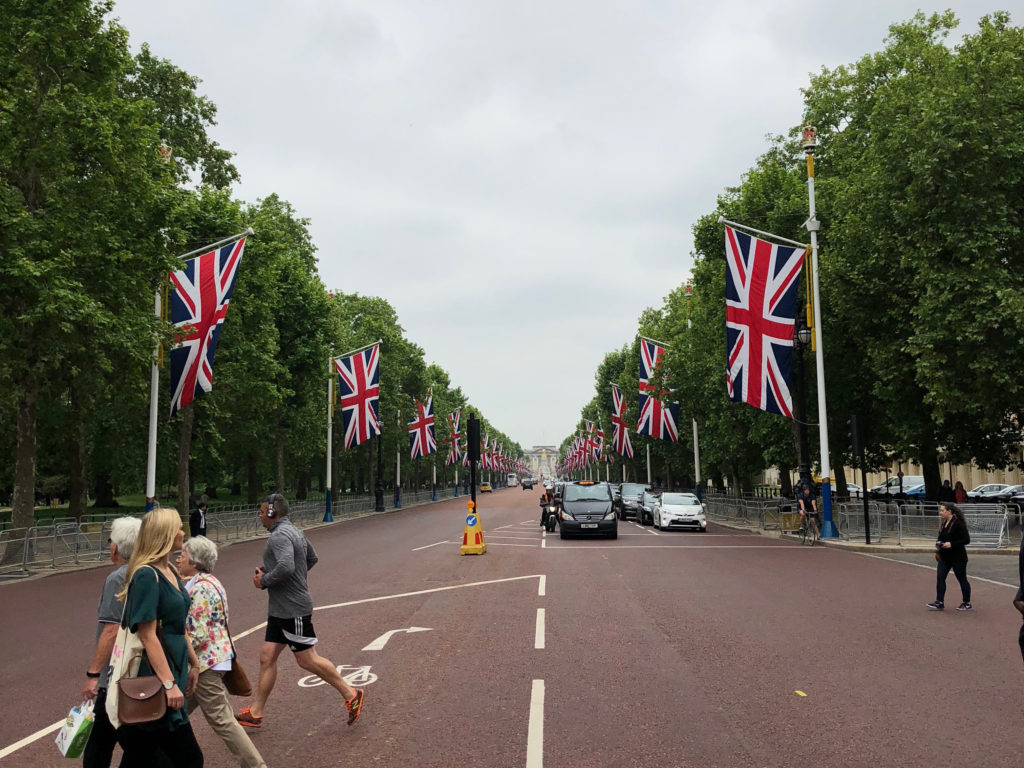
After a delicious lunch of fish and chips from the nearby Sherlock Holmes Pub, I crossed back through Trafalgar Square and headed towards Westminster by way of The Mall: a promenade lined with trees and British flags leading towards Buckingham Palace. I also passed by a row of flags representing the Commonwealth of Nations.
Churchill War Rooms
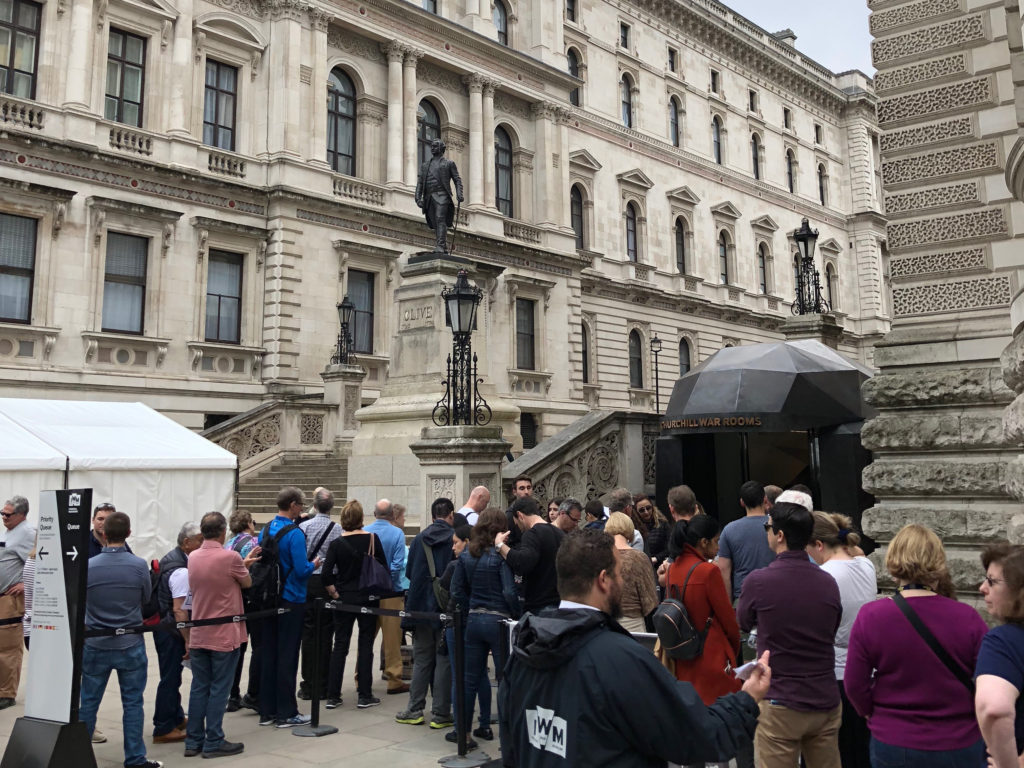
I eventually arrived at the small but crowded entrance to my next London Pass attraction: the Churchill War Rooms. Unfortunately, the pass does not provide fast access to this museum and I had to queue for around an hour. However, once inside, I began to explore this labyrinth of rooms that set my imagination running wild!
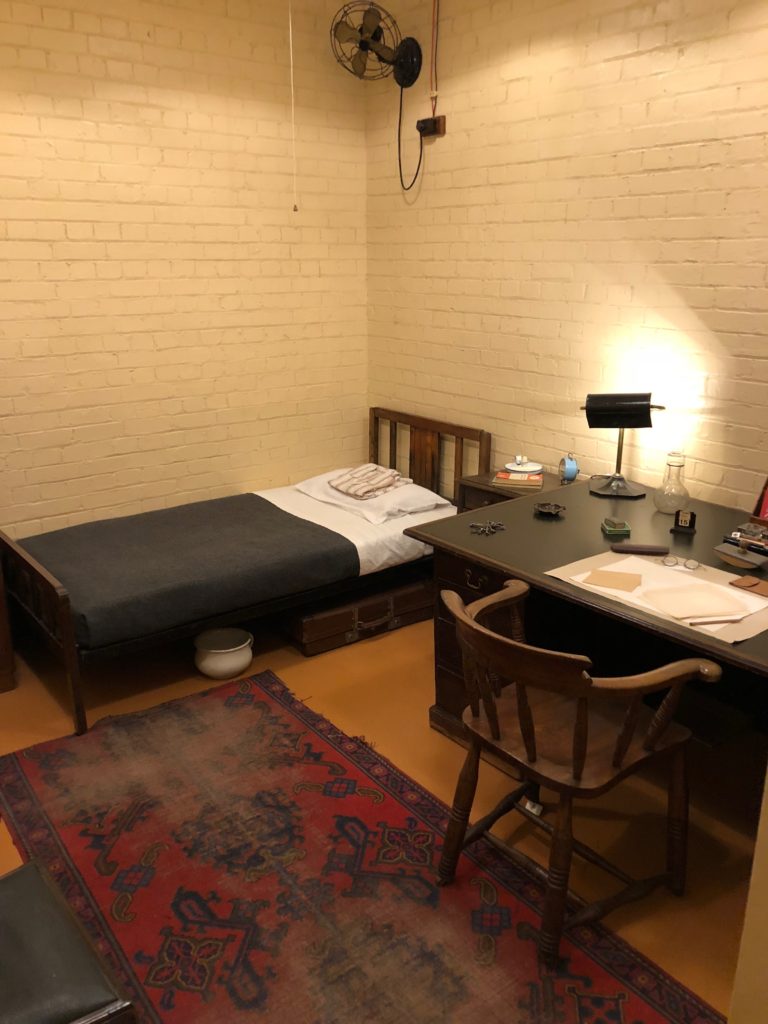
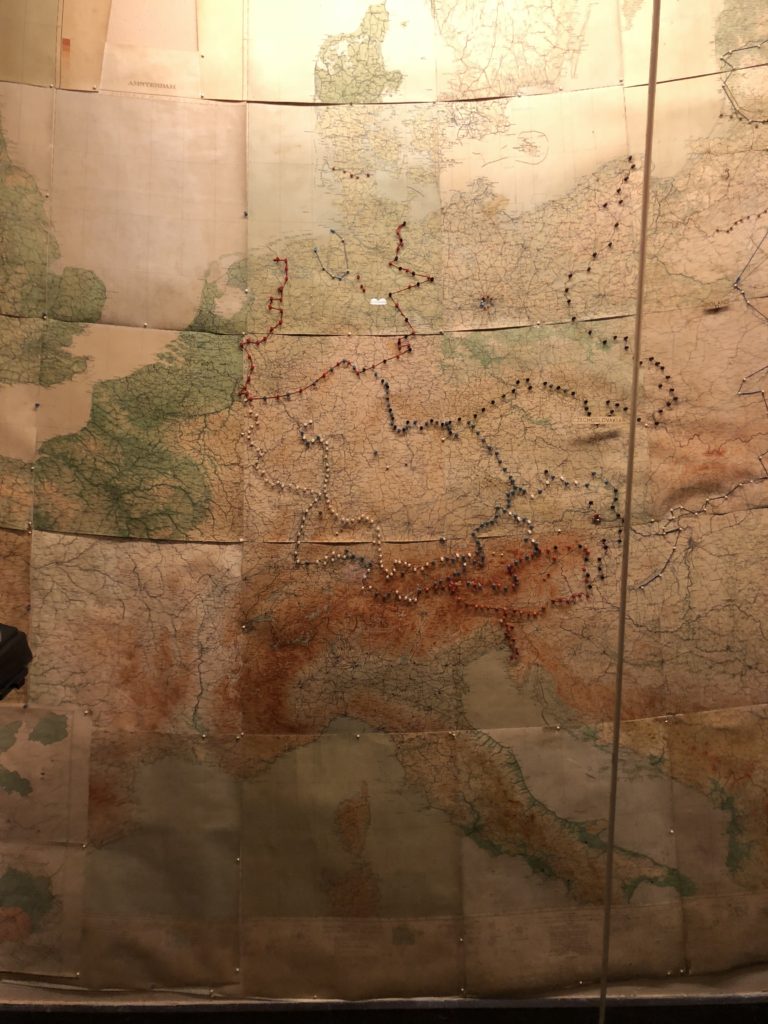
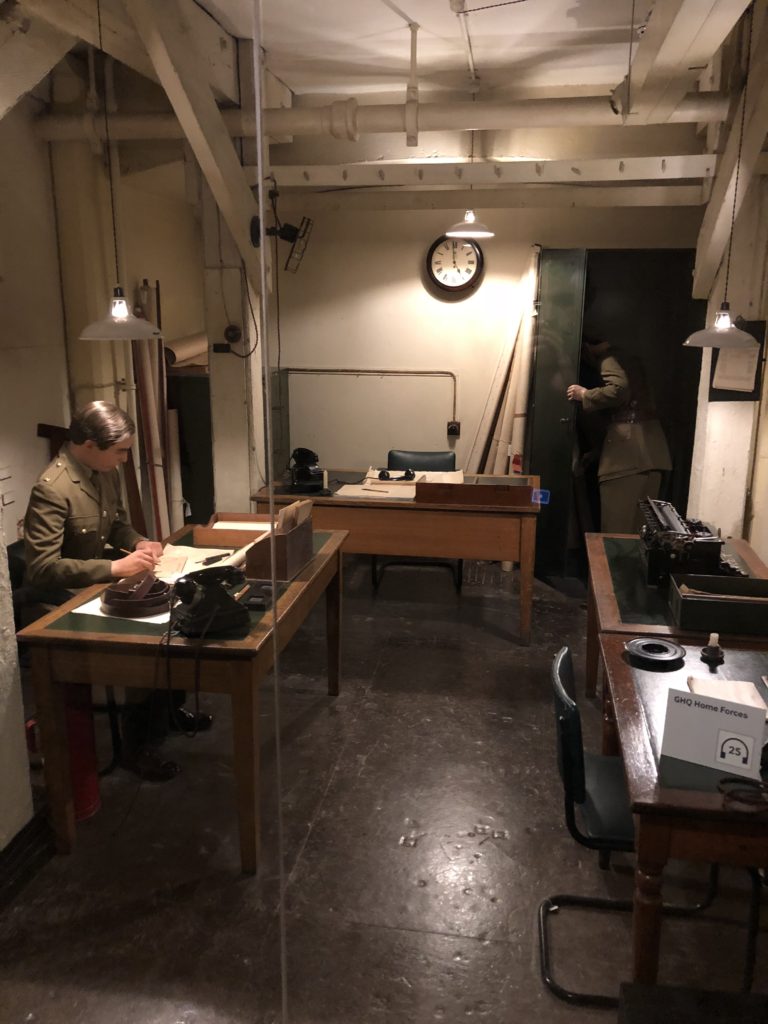
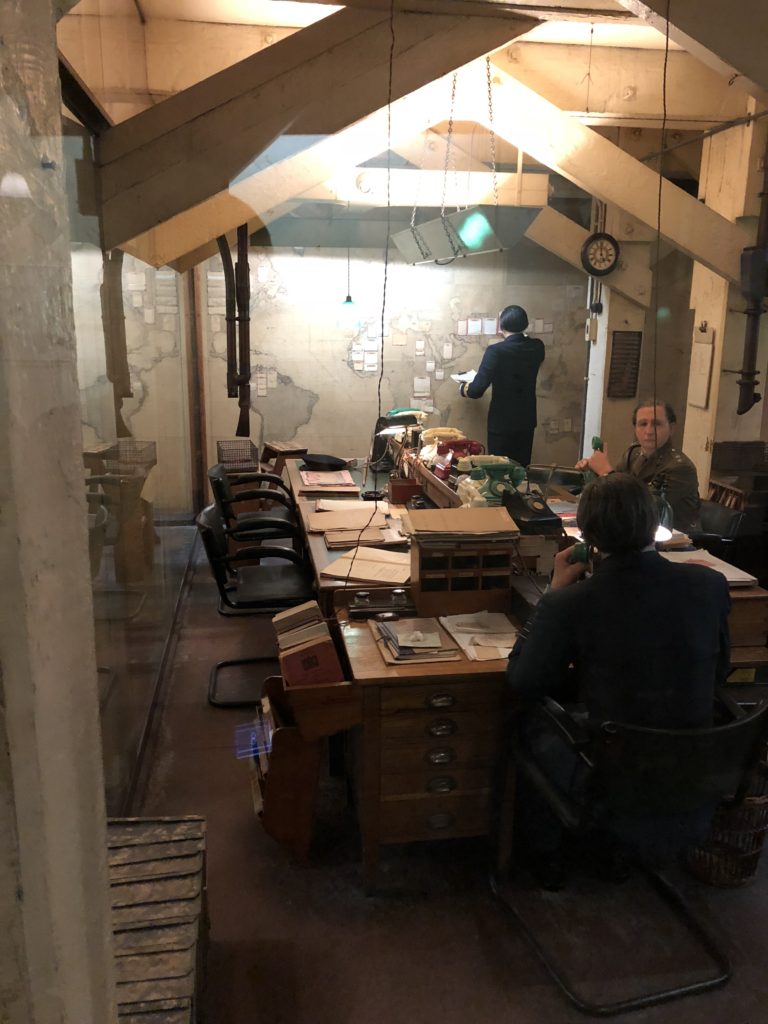
This underground complex was used as a command center during World War II. I walked the footsteps of Winston Churchill, who successfully guided the British to an allied victory in the war. I explored everything from command rooms to rest areas, all of which were left untouched until the complex was converted into a museum. In addition, I explored the exhibit dedicated to Churchill’s life, where I learned more about his time growing up and his role as commander during the war.
The Shard
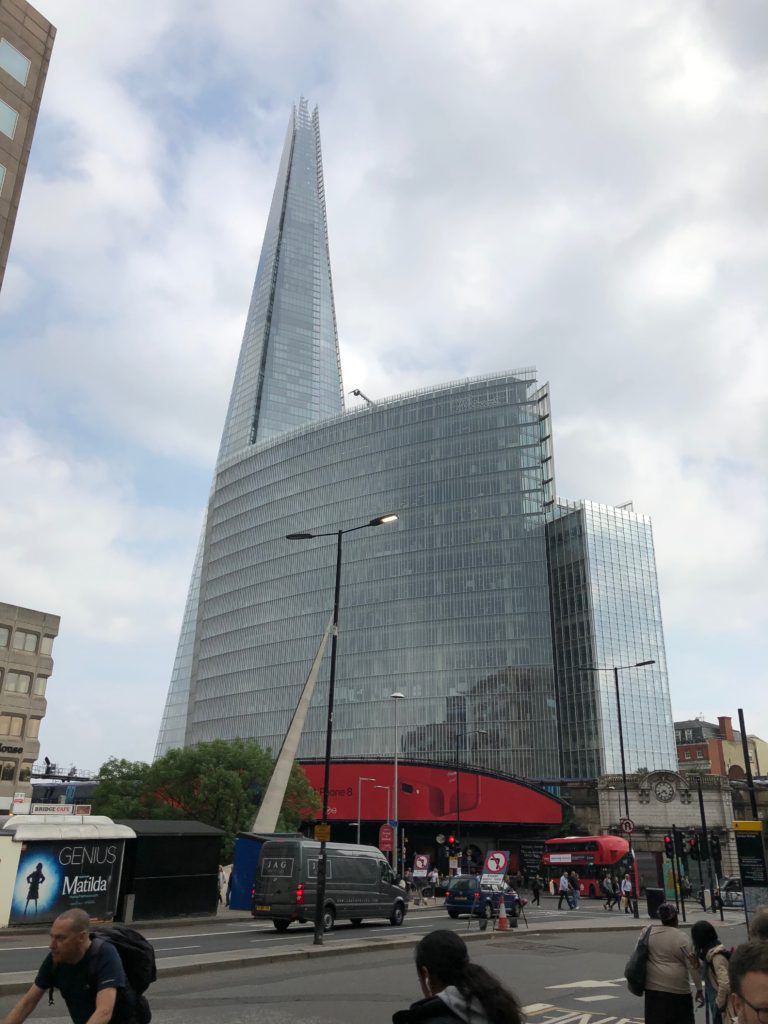
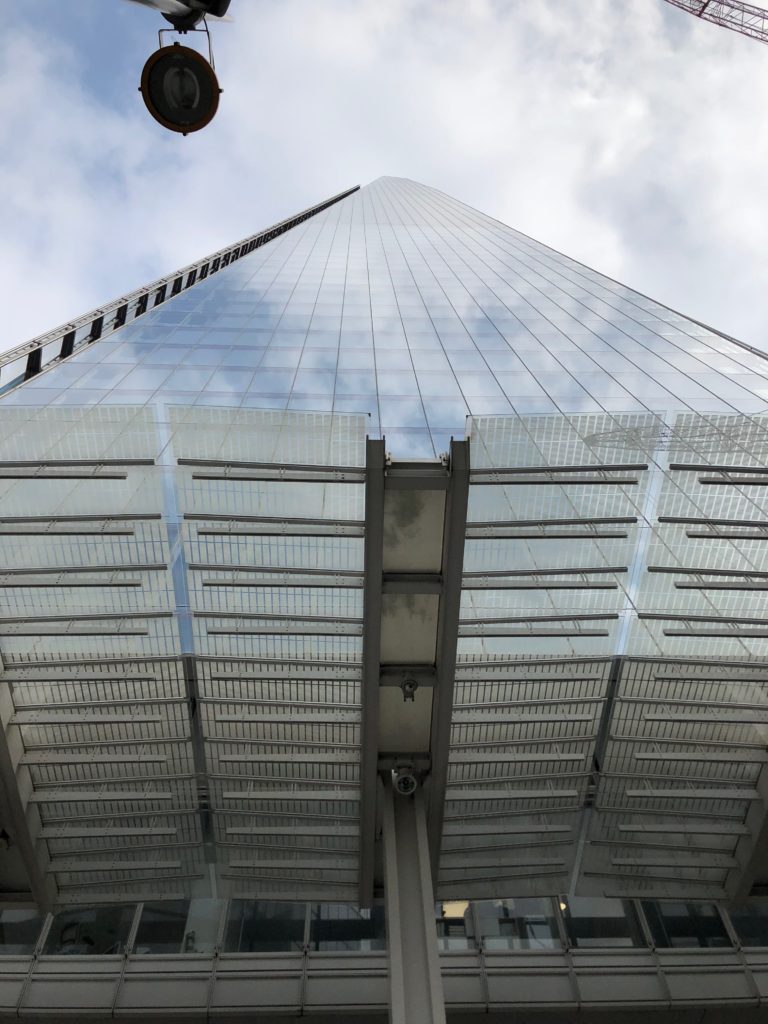
It was late afternoon by the time I left the museum, with just enough time to hit off one more attraction on the London Pass. I hopped on the train at Westminster and headed for London Bridge Station. I arrived next to The Shard: a modern skyscraper designed by Renzo Piano. This spire-like, glass building is the tallest in all of Britain as well as the tallest in Europe outside of Russia. It is a very recent addition to the London skyline, completed in July 2012.
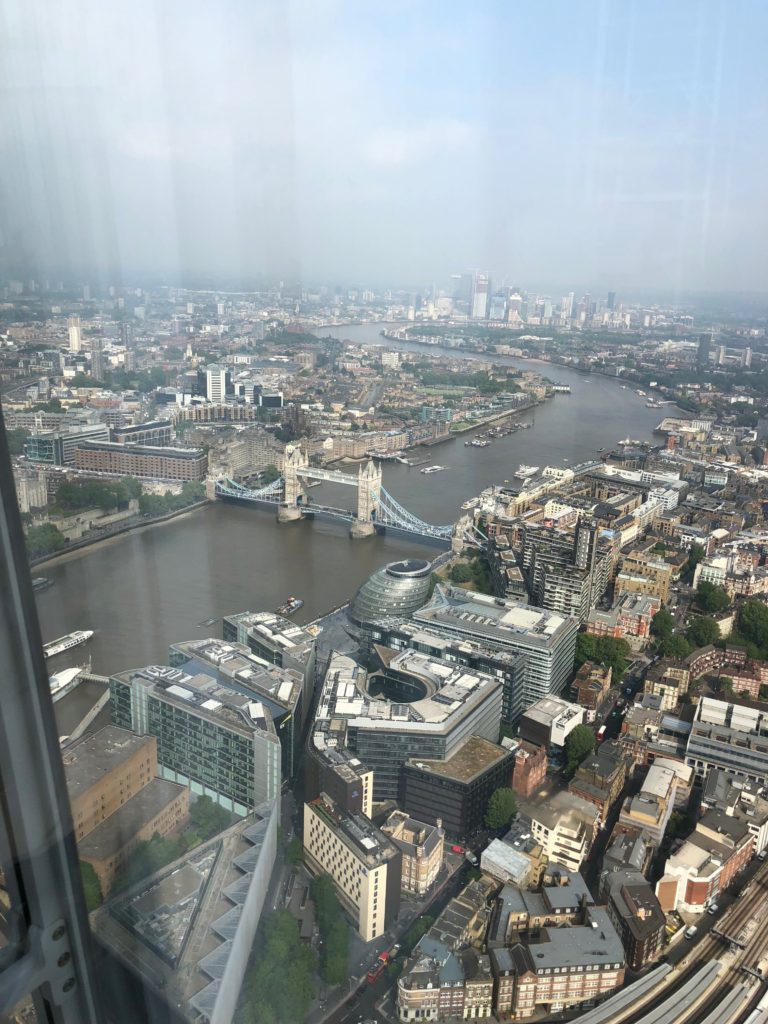
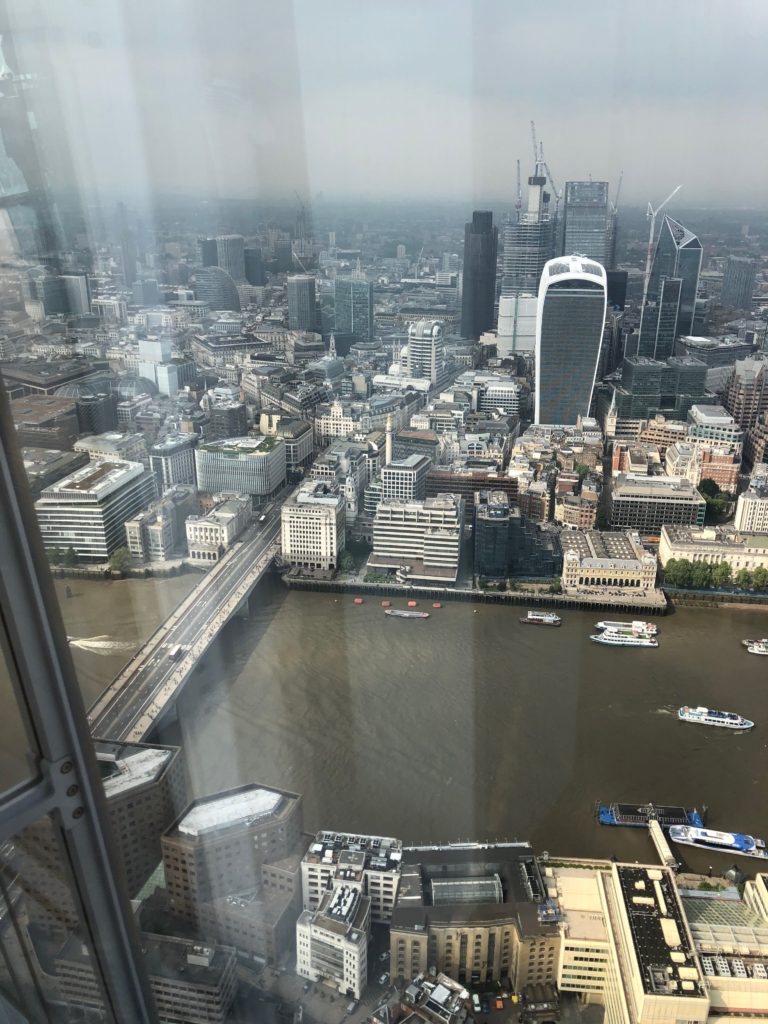
Much to my surprise, there were barely any tourists, even for late afternoon. I showed my pass and got on the elevator. The observation deck rewarded me with a 360° view of the entire city, which paled in size compared to this tall structure. Although it was foggy outside, I could still see all the way to the English countryside.
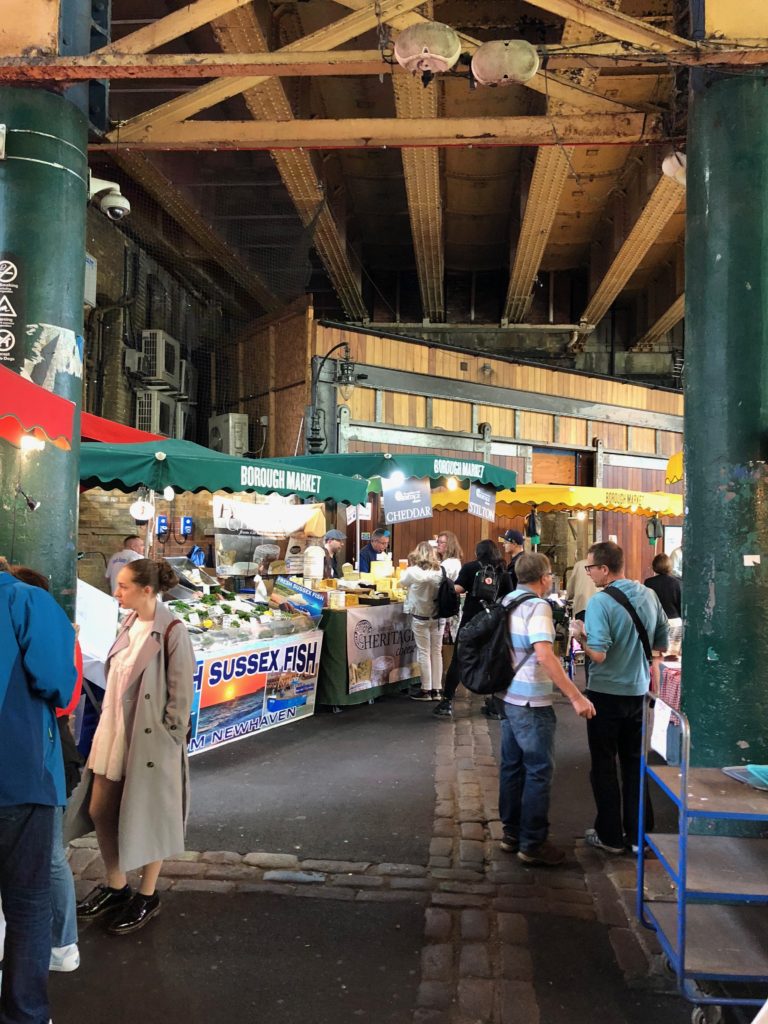
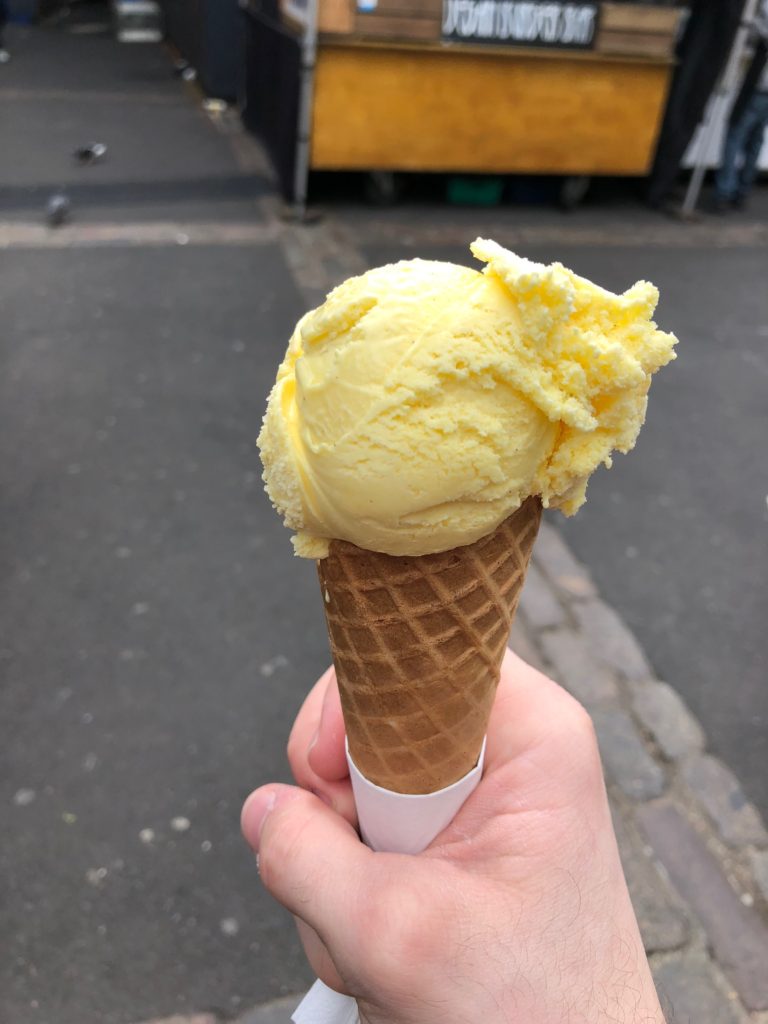
The Shard is located right next to Borough Market: a large outdoor space with a variety of cuisines for sale. Here, I walked passed many food stalls, each representing a different country, and sampled a delicious vanilla ice cream cone.
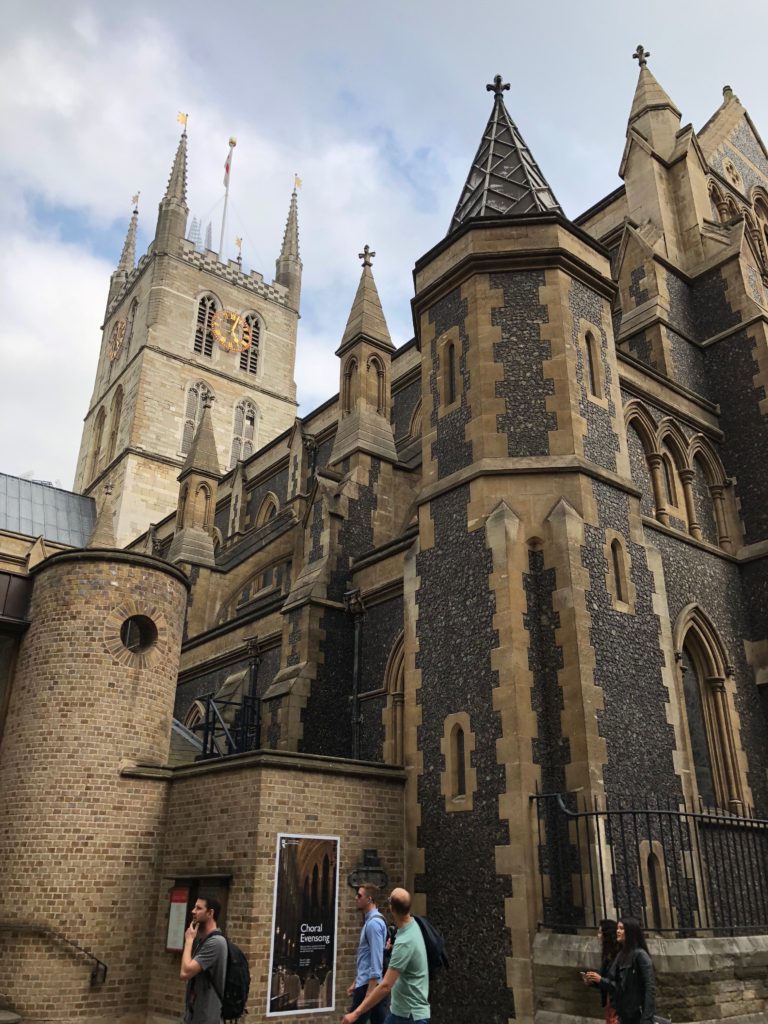
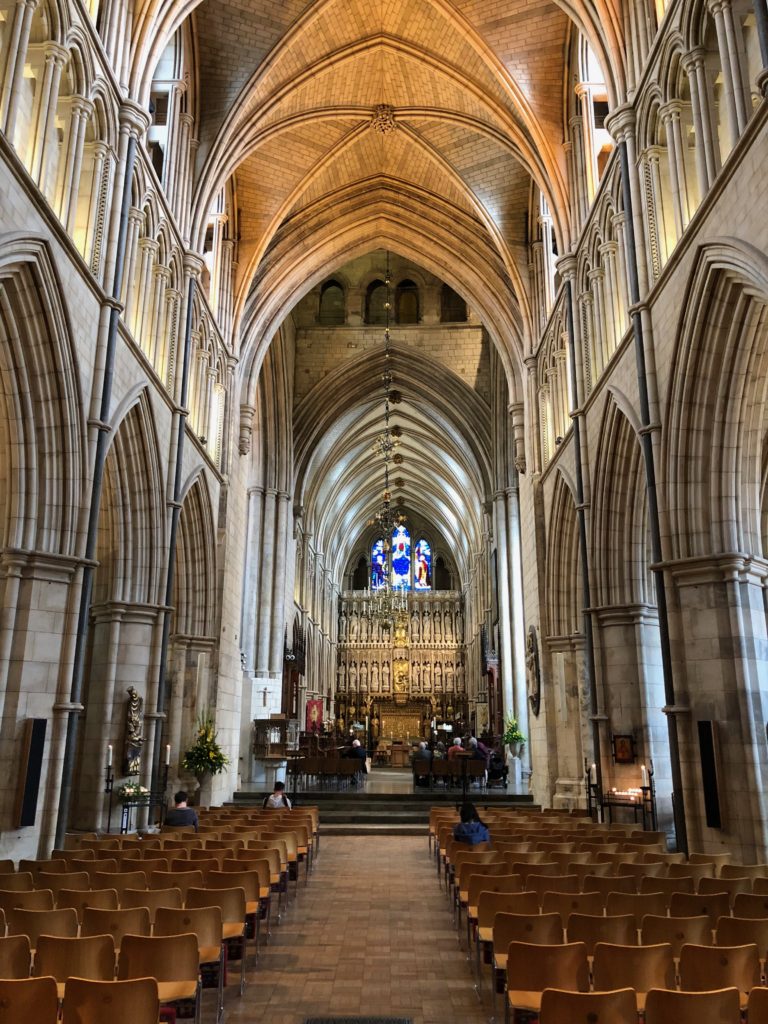
I set my eye on a nearby cathedral. While many locals would come here to pray, I stopped by to look at another beautiful piece of architecture! While this Gothic cathedral is not as extravagant as Westminster Abbey, it still retains its medieval charm compared to the surrounding modern buildings. Its floor plan is based on a traditional church cross, centered around a vaulted nave. I took a moment to relax and soak in the interior.
Wellington Arch
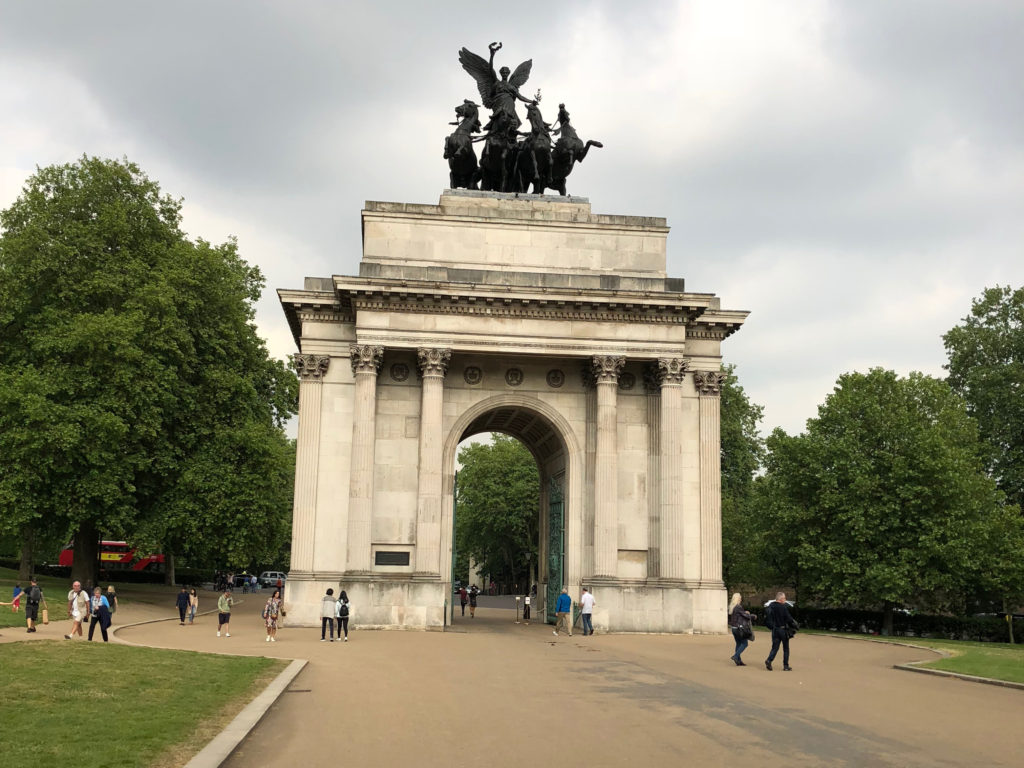
As evening approached, it was time for me to head back towards Kensington. I got off the Tube at the southeastern corner of Hyde Park, right next to a large triumphal arch. This one, called “Wellington Arch,” is one of two arches that commemorates Britain’s victory in the Napoleonic Wars. It gets its name from the 1st Duke of Wellington. Although admission is included in the London Pass, the arch had closed for the day, so I only got to admire the beautiful exterior.
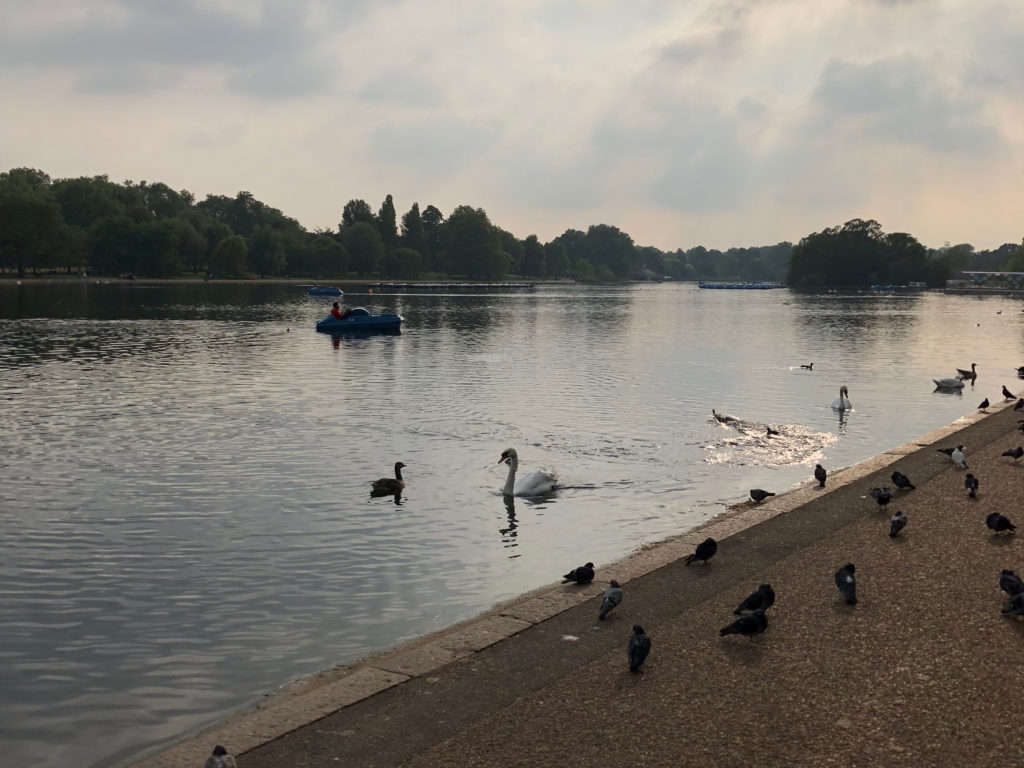
I took the scenic route back to my hostel through Hyde Park. On the way, I passed by people who were enjoying the evening sun, as well as a lovely lake with swans.
I arrived back, ready to schmooze with some of my newly made friends! I met up with everyone I hung out with the night before and also met some new people. One thing I have discovered while traveling is just how small of a world it is. I met two guys at the hostel who were college roommates with a girl I went to high school with! It is amazing just how many people you meet who know others that you haven’t seen in a while.
We all gathered in the common room for drinks and ice-breaking games before heading out to a nearby nightclub in Kensington. Compared to nightlife in Miami, this club was much more laid-back, but still played similar music and was full of energy! We ended the night at a delicious kabob shop. London was quickly becoming my favorite city in Europe! Not only does it have architectural beauty and distinct British charm, but it also has diverse cultures from all over the world. The cherry on top was the amazing group of friends I made at this hostel!
